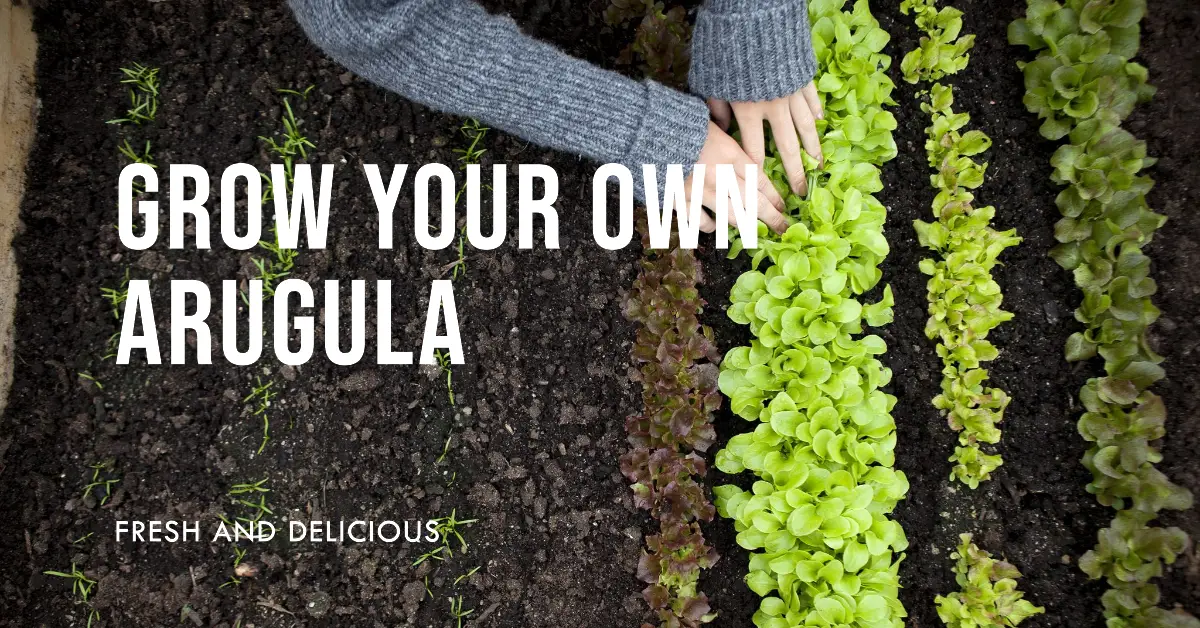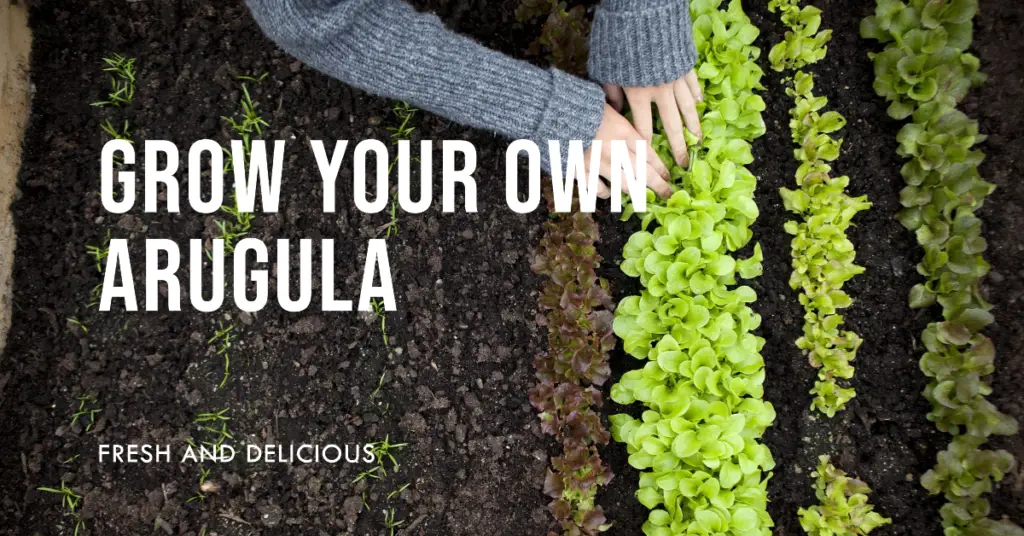
Introduction
Arugula, also known as rocket or roquette, is a leafy green vegetable with a peppery flavor. It is a popular ingredient in salads, wraps, and sandwiches. Arugula is also a good source of vitamins A, C, and K, as well as fiber and antioxidants.

Growing your own arugula from seed is a great way to ensure that you have a fresh supply of this delicious and nutritious vegetable on hand throughout the growing season. Arugula is relatively easy to grow and can be grown in both containers and gardens.
Choosing the Right Arugula Seeds
When choosing arugula seeds, it is important to select a variety that is well-suited to your climate. Arugula is a cool-season crop, so it is best to plant it in the spring or fall. If you live in a warm climate, you may be able to plant arugula in the winter as well.
There are many different varieties of arugula seeds available, so you can choose one that suits your taste and preferences. Some popular varieties include:
- Sylvetta arugula: Sylvetta arugula is a classic arugula variety with a strong, peppery flavor.
- Astro arugula: Astro arugula is a hybrid variety with a milder flavor than Sylvetta arugula.
- Collette arugula: Collette arugula is a slow-bolting variety that produces large leaves.
- Wasabi arugula: Wasabi arugula has a slightly spicy, wasabi-like flavor.
Planting Arugula Seeds
Arugula seeds can be planted directly in the garden or started indoors and transplanted later. To plant arugula seeds directly in the garden, wait until the soil temperature has reached at least 50 degrees Fahrenheit. Sow the seeds 1/4 inch deep and 12 inches apart.
To start arugula seeds indoors, sow the seeds in a seed tray filled with seed starting mix. Place the seed tray in a warm, sunny location and water regularly. When the seedlings are 2-3 inches tall, transplant them into the garden.
Caring for Arugula Plants
Arugula plants need full sun or partial shade and well-drained soil. Water the plants regularly, especially during hot weather. Fertilize the plants every few weeks with a balanced fertilizer.
Arugula plants are susceptible to a number of pests and diseases, including aphids, snails, and slugs. Be sure to inspect the plants regularly for signs of pests and diseases and treat them promptly if necessary.
Health Benefits of Arugula Seeds
Arugula seeds are a good source of vitamins A, C, and K, as well as fiber and antioxidants. They also contain a number of other nutrients that are beneficial for health, including:
- Omega-3 fatty acids: Omega-3 fatty acids are essential fats that are important for heart health, brain function, and inflammation reduction.
- Calcium: Calcium is important for bone health, muscle function, and nerve function.
- Iron: Iron is important for carrying oxygen throughout the body.
- Magnesium: Magnesium is important for muscle function, nerve function, and blood sugar control.
- Potassium: Potassium is important for blood pressure control and fluid balance.
In addition to these nutrients, arugula seeds also contain a number of compounds that have been shown to have health benefits. For example, arugula seeds contain glucosinolates, which are compounds that have been shown to have anti-cancer properties.
Arugula seeds are a versatile food that can be eaten in a number of ways. They can be added to salads, smoothies, yogurt, or cereal. They can also be roasted and used as a topping for soups, stews, or roasted vegetables.
Here are some of the specific health benefits that have been linked to arugula seeds:
- Improved heart health: The omega-3 fatty acids in arugula seeds can help to lower cholesterol levels and reduce the risk of heart disease.
- Reduced risk of cancer: The glucosinolates in arugula seeds have been shown to have anti-cancer properties.
- Stronger bones: The calcium and magnesium in arugula seeds are important for bone health.
- Improved blood sugar control: The magnesium in arugula seeds can help to improve blood sugar control.
- Reduced blood pressure: The potassium in arugula seeds can help to lower blood pressure.
Overall, arugula seeds are a nutritious and healthy food that can offer a number of health benefits.
Harvesting Arugula
Arugula can be harvested when the leaves are 3-4 inches long. To harvest arugula, simply cut the leaves from the plant at the base.
Arugula will last for up to 3 days in the refrigerator. To store arugula, wrap it in a damp paper towel and place it in a plastic bag.
Conclusion
Growing your own arugula from seed is a great way to ensure that you have a fresh supply of this delicious and nutritious vegetable on hand throughout the growing season. Arugula is relatively easy to grow and can be grown in both containers and gardens.




